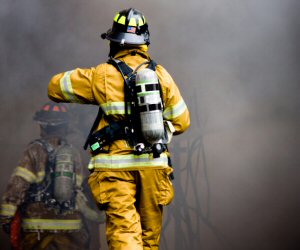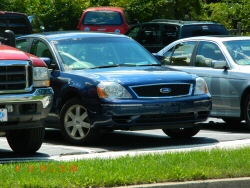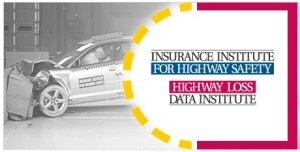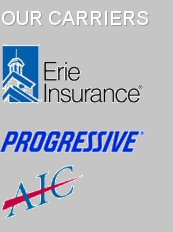 The year of 2011 was a brutal one for the eastern part of the U.S. -- sustaining an earthquake, a major hurricane and serious flooding – all within less than one month. As a business owner, you probably are well aware that such natural disasters can cause serious problems for a company that has no strong disaster plan in place to allow for recovery. If your company has a plan but it has not been reviewed in years and/or your employees are not aware of it, then you are just as vulnerable as a company that has no plan at all.
The year of 2011 was a brutal one for the eastern part of the U.S. -- sustaining an earthquake, a major hurricane and serious flooding – all within less than one month. As a business owner, you probably are well aware that such natural disasters can cause serious problems for a company that has no strong disaster plan in place to allow for recovery. If your company has a plan but it has not been reviewed in years and/or your employees are not aware of it, then you are just as vulnerable as a company that has no plan at all.
If you are ready to develop an effective emergency plan for your business, then reading “Could your business survive a disaster? ” is a great way to get started.
A company's disaster planning cannot be effectively done in a vacuum. Without co-workers at all levels being brought into the planning process, you will lose valuable input, so include them as active members of your emergency management team.
In Your Business Disaster Plan, Focus on Your Employees
As a business owner, you know that your employees are your company’s most important asset. You undoubtedly feel the obligation to care for them in the workplace; and doing so before, during and after a disaster will strengthen your business continuity.Although your disaster recovery plan should outline procedures that can be put into practice before a disaster to protect employees, it is just as critical to know in advance what your people will need following a disaster. It is likely they will need time to ensure the well-being of their family should disaster strike. But those who have experienced previous disasters will tell you that an important part of their personal recovery involved the stability of getting back to work. Thus, procedures that will restore workplace routines whenever possible are important elements in your over-all disaster plan.
Employees' Special Needs Require Special Plans
Your disaster planning should address employees' special needs as well. If you have employees with disabilities, they already know what assistance they would need, should an emergency arise. So it is important to identify those in your company with special needs and encourage them to take part in your emergency planning process. Explore the various equipment operations, communication challenges, physical limitations, medication requirements and any other procedures that apply. Don’t overlook the logistics – explore an efective process for alerting those who would otherwise not hear alarms, and identify those who are willing to assist disabled coworkers and are physically able to do what is needed including lifting or carrying.
Your Insurance Agent: An Important Member of Your Disaster Planning Team
During recovery after a disaster, your insurance coverage would certainly have a major role in determining how quickly and efficiently you would be able to resume business operations including services to your customers. So you’ll want to know that you are protected long before disaster strikes. Including your insurance agent in your planning process will assure that you don’t make incorrect assumptions or overlook essential issues. A review of your current policies and coverages is the first step.
Here at the Daniel Howley Insurance Agency in Rockville, MD, our experienced agents are ready and able to help you assess your coverage and plan for all your insurance needs. Please contact us at your convenience.
Arrange a no-obligation review of your insurance policies
 Dοеѕ vehicle size impact auto insurance rates? Of course it does and for several reasons.
Dοеѕ vehicle size impact auto insurance rates? Of course it does and for several reasons.
With fuel economy being a huge concern in this day of ever rising gas prices, smaller and more fuel-efficient vehicles are very popular. In fact, the U.S. Environmental Protection Agency (EPA) notes that you can save as much as $1,400 in fuel costs each year by choosing the most efficient vehicle that meets your needs. Typically, these vehicles that highlight economy are “family cars” with smaller engines. These models are not deemed high-performance, don’t move as quickly as their flashy, sporty counterparts and are much less likely to be involved in moving violations. Thus, they tend to provide the benefit of lower insurance rates.
Many of these automobiles with smaller frames marketed for “family use” emphasize safety features. New models will likely have standard left and right front air bags, side air bags, lap-and-shoulder belts in all outboard seating positions, and child safety seat top-tether and lower LATCH attachments in the rear seats. Consumer Reports indicates that contemporary safety-oriented designs and equipment may offer the smaller auto an advantage in avoiding an accident. Often, this means consumers might expect lower auto insurance rates.
Auto theft is also a consideration. Although the National Insurance Crime Bureau (NICB) reports that the 1994 Honda Accord, 1995 Honda Civic and 1991 Toyota Camry are the top three most-stolen cars in recent years, the bulk of vehicles reporting the most thefts are the larger and more expensive SUVs and pickup trucks. These three models aside, smaller “family” cars are usually less desirable targets for thieves. This could translate into further insurance savings for their owners.
So we can see that, when it comes to automobile efficiency and economy, size dοеѕ matter. Smaller cars are often less likely to be stolen, safer to operate, more economical to fuel and maintain, often easier on the environment and could offer a considerable break in insurance costs.
If you are in the market for a new car or just wondering how your car measures up when it comes to insurance rates, a brief meeting with your local insurance agent will give you the facts that you need.
Here at Daniel Howley Insurance Agency in Rockville, MD, we have the expertise to help you to have the best insurance coverage at the best rate for your particular budget and needs. Why not contact us today?
Request an Auto Insurance Quote
Arrange a no-obligation insurance policy review
See the EPA’s Green Vehicle Guide
 You've done your homework. You've compared various models and makes to find the car with the best gas mileage and feature package to meet your needs. You've even considered resale value. But have you looked at the most recent crash test results? Do you know your vehicle's safety rating? Is your chosen car, truck or SUV on this year's Top Safety Picks by the IIHS?
You've done your homework. You've compared various models and makes to find the car with the best gas mileage and feature package to meet your needs. You've even considered resale value. But have you looked at the most recent crash test results? Do you know your vehicle's safety rating? Is your chosen car, truck or SUV on this year's Top Safety Picks by the IIHS?
Why is Safety Rating Important?
Your insurance company uses a vehicle's crash test rating as part of their criteria in determining the risk, and the level of risk has a significant impact on the insurance rate and therefore on your premium.
What Else Does the Insurance Company Look At?
Safety features also impact the insurance rate. Vehicles with similar prices may often have very different auto insurance premiums simply based on the vehicle's safety features. A car priced at $28,000 may be much less expensive to insure than a car priced at $21,000 if the higher-priced vehicle includes ABS brakes, side and front airbags and other safety features not included on the cheaper model.
Get all the details about Auto Insurance, this year's Top Safety Picks, Crash Testing and more.
Find out how to save on your auto insurance bill...
![]() Not just here in Maryland and the east coast but all throughout the U.S., winter weather brings unique hazards for your home; and if you are like many of your neighbors, you are probably wondering just what your homeowners insurance policy would cover in the event of a cold-weather-related peril.
Not just here in Maryland and the east coast but all throughout the U.S., winter weather brings unique hazards for your home; and if you are like many of your neighbors, you are probably wondering just what your homeowners insurance policy would cover in the event of a cold-weather-related peril.
One such peril of winter is the threat of freezing pipes when the temperature drops. In some cases, frozen pipes can burst. Although you'll find that damage from frozen pipes is typically covered by homeowners insurance, taking precautions in advance could prevent such damage in the first place. And if pipes do freeze, it is important to know how to thaw them and what steps to take to repair any damage.
Want more details? See Tips to Handle Frozen Pipes in Your Home.
Not sure whether your homeowners insurance would cover damage from frozen pipes? Why not contact our office for a free, no-obligation review of your policy to be sure of your coverage?









